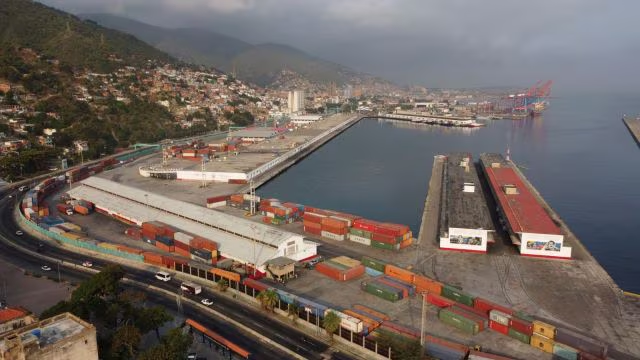
New Delhi: In a potential blow to India’s oil import strategy, U.S. President Donald Trump has announced a 25% “secondary tariff” on countries, including India and China, that purchase Venezuelan oil starting April 2. The move, aimed at countering Venezuela’s perceived hostility toward the U.S., adds new geopolitical uncertainties for India’s energy sector.
“Venezuela has been very hostile to the U.S. and the freedoms we espouse. Therefore, any country purchasing oil and/or gas from Venezuela will be required to pay a 25% tariff to the U.S. on any trade conducted with our country,” Trump stated in a social media post on Monday.
According to the Financial Times, Trump confirmed that this new tariff would be imposed in addition to any existing levies. The executive order published Monday evening stipulates that once applied, the tariff would remain in place for a year after the last recorded import of Venezuelan oil unless the U.S. commerce secretary decides to lift it earlier.
Impact on India’s Oil Imports
India resumed crude oil imports from Venezuela in December 2023 after a three-year hiatus, following the temporary easing of U.S. sanctions on the South American country. While Washington later reimposed sanctions, some oil companies continued receiving exemptions, allowing Venezuelan crude to reach various international markets, including India.
Though Venezuela no longer plays a dominant role in India’s crude imports, its shipments have been steadily rising. India imported around 65,000 barrels per day (bpd) of Venezuelan crude in January 2025 and 93,000 bpd in February, according to commodity market analytics firm Kpler.
Before U.S. sanctions in 2019, Indian refiners—primarily Reliance Industries Ltd. (RIL) and Nayara Energy (NEL)—were among the largest buyers of Venezuelan crude. In 2019, Venezuela was India’s fifth-largest crude supplier, exporting nearly 16 million tonnes to Indian refiners.
The new tariff threat comes at a time when India’s oil dependency is at record levels. According to data from the Petroleum Planning & Analysis Cell (PPAC), India’s oil import dependency stood at 88.2% between April and February, up from 87.7% during the same period in FY24.
Potential Impact on Oil Prices
While additional restrictions on Venezuelan crude may not significantly disrupt the global supply, they could contribute to a rise in oil prices—an unfavorable scenario for net importers like India.
Indian Petroleum Minister Hardeep Singh Puri has reiterated that India will continue purchasing oil based on economic feasibility and availability, provided it is not under sanctions. As the world’s third-largest oil consumer, India imports over 85% of its crude requirements.
Diplomatic Talks Amid Rising Concerns
The tariff announcement comes just ahead of a four-day visit by a high-level U.S. trade delegation to India, starting Tuesday. The delegation, led by Assistant U.S. Trade Representative for South and Central Asia Brendan Lynch, is expected to discuss trade and investment-related matters.
The U.S. Embassy confirmed that “trade” and “investment” will be central to bilateral discussions. India’s trade negotiations, particularly with developed nations, often involve investment commitments in return for tariff concessions.
As India’s crude oil demand continues to grow, refining capacity is also set for expansion. The country’s current refining capacity stands at nearly 257 million tonnes per annum, with further growth expected to accommodate rising domestic consumption.
With India emerging as a key player in global oil demand, any policy changes impacting energy imports could have long-term implications for the country’s economic stability and trade relations.














